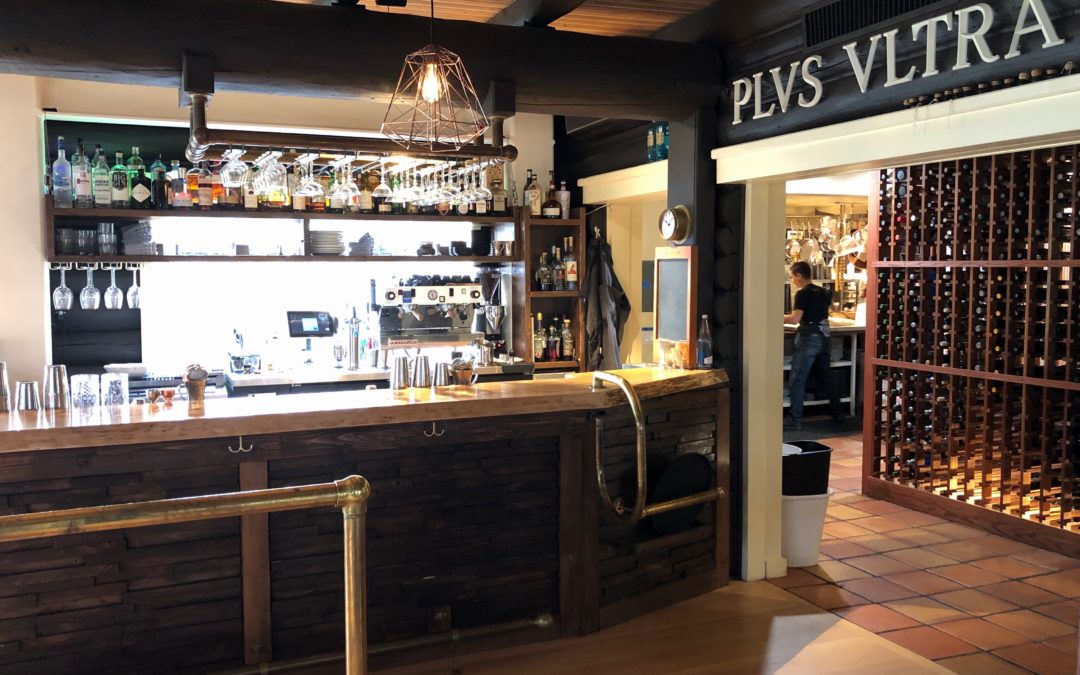BY: Jeremy Martin
RHI Solutions
The Knife moves quickly, in one fluid motion; an incision, a laceration and the sharpened blade slices fat from lean. Each cut takes seconds, each cleft and another primal is removed from what was once nearly 400 LBs of prime beef.
From the outside looking in, this simple act of daily prep appears as natural as washing salad greens. Though in reality, today’s butchery is yet another in a long line of unexpected and fortuitous moments in the still young
life of West Seattle’s Il Nido.
“We actually haven’t done this before,” explained Mark Easton, the restaurant’s owner/operator, and the defacto in-house butcher. “This is the first big, whole animal we’ve gotten.”
Some of what Easton cuts will be vacuum-sealed and frozen for later use, but most will be served fresh, including the restaurant’s award-winning rib-eye.
“We’re going to go through the ribeye pretty much this week, other cuts we’ll do specials,” Easton said.
‘Primarily a pasta house,’ and less than six months old, yet Il Nido is quickly becoming known as one of the finest houses for steak in the Emerald City.
This may, in part, be due to the setting, a venerable log home just two (current) city blocks from the shores of Puget Sound. Or perhaps to Easton’s trial by fire; studying the arts of meat and pasta under a demanding Tuscan chef.
Though the Vulcan VACB60 Wood Assisted Charbroiler on Il Nido’s cook line no doubt has a small say in churning out what The Seattle Times says is “probably the best steak you’ll ever have in your life.”
“When I found out that (Vulcan) does a wood assist, I was pretty excited about that. It adds so much depth to everything we’re doing,” Easton said.
What Il Nido is doing, is some pretty creative twists on Easton’s traditional Italian education.
“We use (the charboiler) as a smoker during the day. We’ll load up just wood and not even turn on the gas. I put a rack above it and we use that as a smoking rack,” explained Easton. “We’re doing arctic char and we smoked all the bones and heads to make a smoked fish broth. We’ve done linked, smoked sausage, slow smoked lamb loin, salmon. We love it, the smoke just adds that element that everyone wants to taste.”
That unit, matched with a 60SS-10B Endurance Range and 36RB Salamander has allowed Easton and his team to maneuver blithely between fresh cut protein to in-house pasta, scratch sauces, and delicate, seasonal vegetable dishes without missing a beat.
However, being dubbed a ‘Best Bite’ in both the Seattle Times and Seattle Met was no forgone conclusion for Il Nido. In fact, becoming a fine dining, Italian concept was never a card in the original hand the restaurant was dealt.
“My other passion is Spanish food, and I was originally looking for a space to do a little Spanish bar,” Easton said.
But when an electrical inspection on a chosen building failed, and a chance recommendation to help renovate an historic fire damaged cabin was proposed, that ‘little Spanish bar’ became a 64-top Italian Restaurant, and Seattle’s dining scene was given a new star.
Januarys on West Seattle’s Alki Beach are windswept, quiet and with it’s low slung buildings and sleepy restaurants, seemingly unchanged and undisturbed by the building boom that has sent every other Seattle neighborhood shooting vertically toward the clouds.
January 16th, 2009 would prove different as the screams of dog walkers and the unmistakable howl of fire sirens pierced the beach front air. The historic Alki Homestead was on fire.
Completed in 1904, The Fir Lodge was home to early Seattle big shot William Bernard and his wife, Gladys. One of the first permanent residences on Alki beach, the estate had an, at the time, unbroken view of the Olympic Mountains and Puget sound. The Bernard’s left Fir Lodge less than a decade later and the property bounced from one owner to the next. That is until it cemented itself as a community gathering place in 1950 when the first restaurant opened within its timbererd walls.
Dubbed The Alki Homestead, the property played host to countless waves of Seattleites who washed up on the Cabin’s porch seeking a good meal with friends and family. Nearly sixty years of lunches and dinners came to a tragic halt on that gray Friday morning. The extensive fire, smoke and water damage nearly made certain another meal would never again be served at the homestead.
“There was a hole burned through the ceiling,” Easton said. “It essentially had a skylight. When a place burns down, there’s the fire damage, then there’s the damage of trying to put out the fire. The water damage was really expensive. the floors had to be redone, a lot of the logs had to be replaced.”
Though the landlord was eager to rebuild and reopen, a new tenant was needed to lift some of that load, a process that took nearly a decade. Not that Easton was overly eager to take
on the project once he saw it.
“I came down and looked at it and the first time I saw it my gut reaction was this is way too big,” Easton said. “The idea of actually doing a restaurant this big was a little daunting.”
Though it became less so as he began to survey the possibilities the Homestead offered, along with the potential equipment he could use to bring those possibilities to life.
“The landlord wanted to keep it as original as possible. Since it’s a historic building, we can’t really do anything to the look of the place, you really have to keep it looking historic,” Easton said.
That’s why the interior of the structure holds a true-to-form rustic, turn of the century feel and the kitchen, the one place he could design from scratch, is full of modern Vulcan equipment.
“One of the reasons I picked Vulcan is because they’re sturdy. I like the welded frame; I like the big burners. Everything in here is going to take a beating, they get worked,” Easton explained.
“These things are burley, you have to pick good things, no cook likes to work a job where things are breaking down, where things don’t work.”
So Easton chose Vulcan equipment for Il Nido, and once he did, he allowed that equipment to choose his menu.
“That’s the way I’ve always run kitchens, I think the biggest mistake that new restaurateurs make is to have a preconceived menu before they even build or design their kitchen.
I want to look at the space I have, imagine the most efficient equipment I can have in there and what menu can I create from this space,” Easton said.
“Coming up with good ideas is the smallest part of being a chef and running a restaurant,” Easton mused. “Anyone can think of these crazy dishes, but can you execute them?”
Thanks to Il Nido’s equipment, it’s historic location and Easton’s traditional training; it’s pretty safe to say that yes, Mike Easton can execute them.

